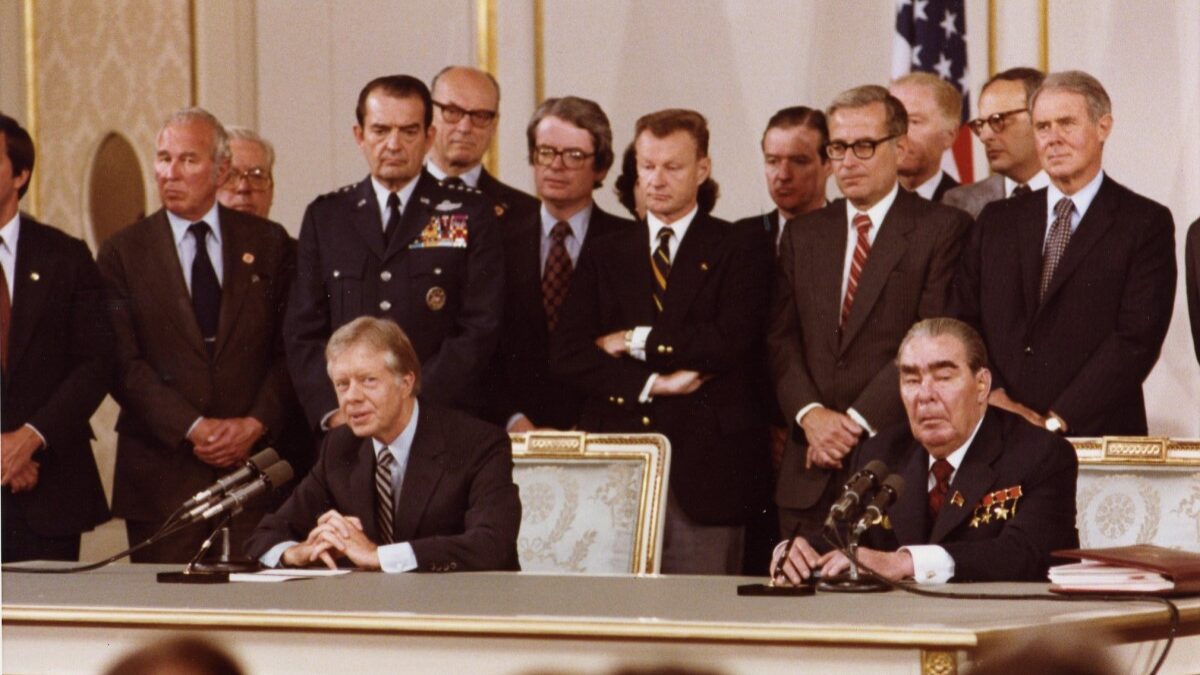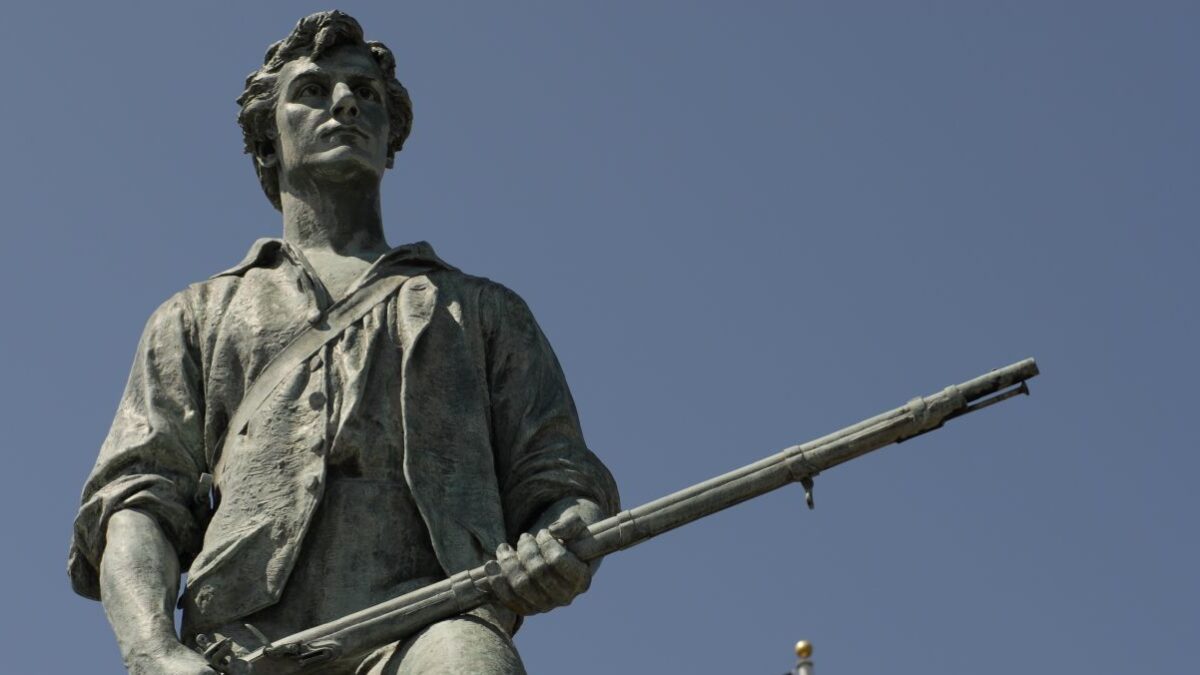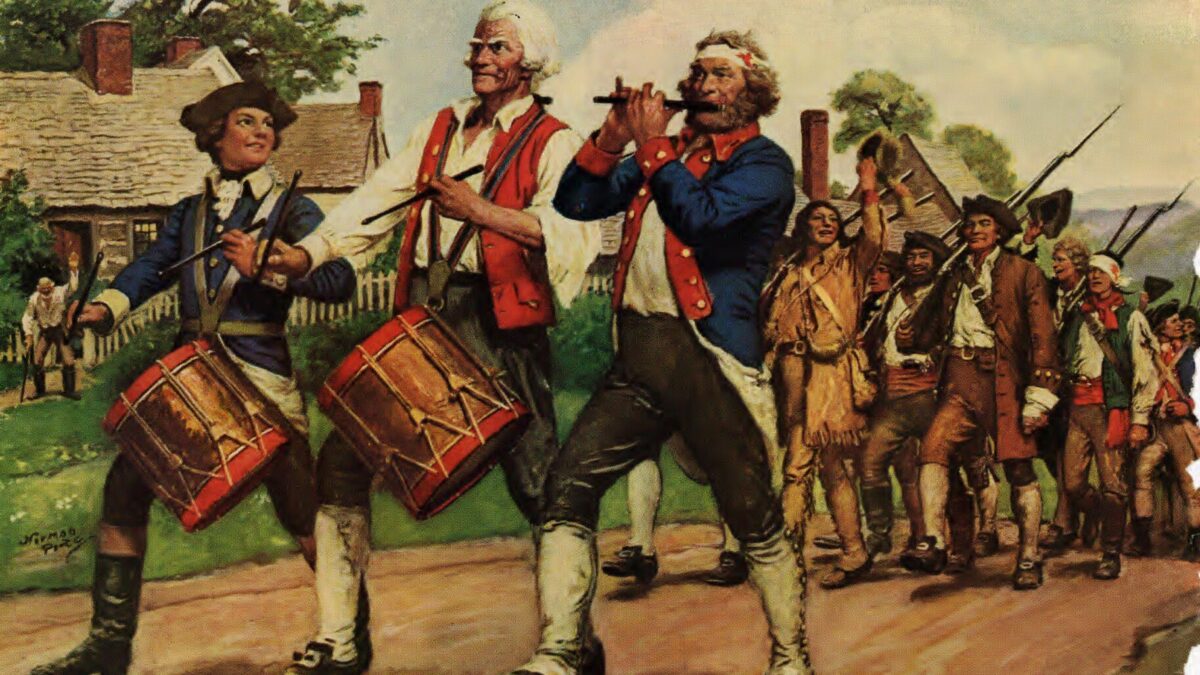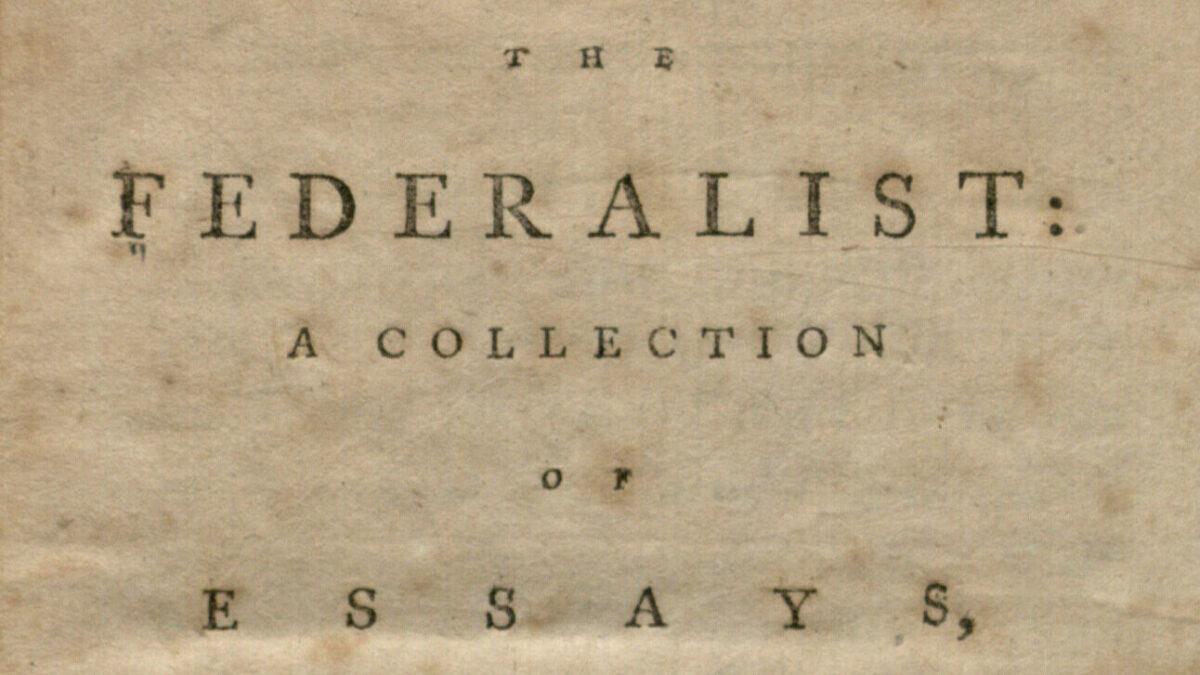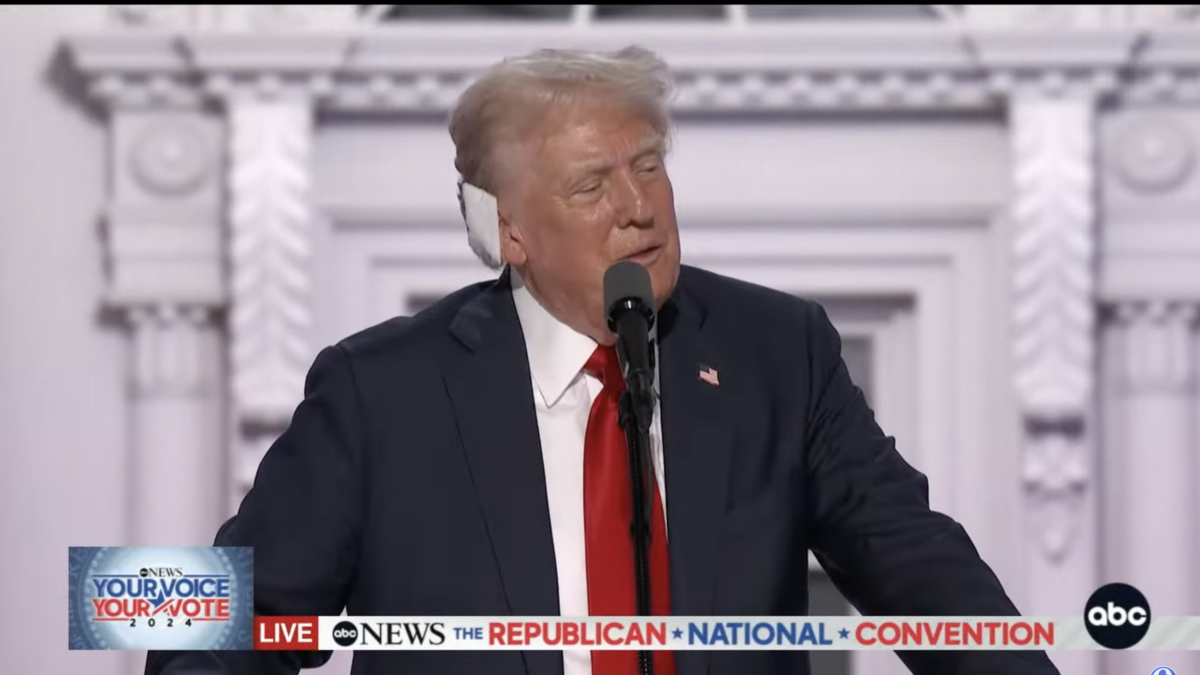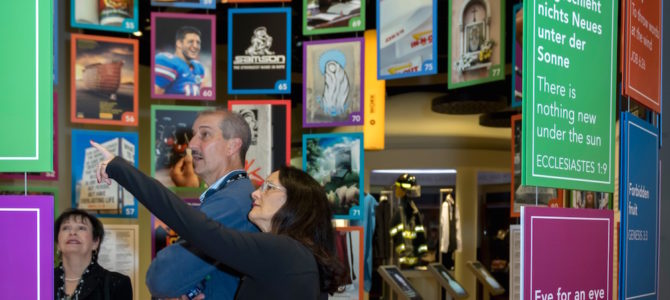
The professor of Jewish studies passes under an ornate archway, leading to another part of the sprawling History of the Bible floor. Keeping up with him isn’t easy, as we dodge workers who continue to install museum panels before opening day.
“There’s nothing false anywhere,” Professor Lawrence Schiffman says over his shoulder, gesturing towards dozens of Torah scrolls carefully lit for preservation. “I’ve been walking around even today, reading more labels. We keep criticizing little picky things; that’s our job as scholars.”
Led by Schiffman, who sports a Brooklyn accent and traditional kippah head covering, the scene would fit more at a New York synagogue than a Bible museum founded by evangelical Christians. Director of Hebraic and Judaic studies at New York University, he has served as a Hebrew manuscripts consultant since early 2016 for Museum of the Bible, which opened last weekend in Washington DC.
“This museum is not a hijacking of Jewish tradition to serve another religion,” he says bluntly when asked about its mostly Christian funding. “It’s legit.”
Proving legitimacy has been an uphill battle since its announcement in 2011. Brimming with technology and artifacts that illuminate the sacred text, Museum of the Bible has been hounded by various critiques. There’s either too much God or not enough Jesus, depending on the critic.
Yet even skeptics are wowed by the high-tech museum once they see it. Pulitzer Prize winner Philip Kennicott called Museum of the Bible “rich in content [and] stocked with historic treasures.” His front-page Washington Post story was effusive: “It sets a new standard for how this country’s museums fuse entertainment and education.”
Envisioned by Hobby Lobby craft chain owners Steve and Jackie Green, the Museum of the Bible reflects a kaleidoscope of faith traditions, story formats, and artistic approaches. A closer look at the multi-faceted museum offerings—with commentary from the Jewish, Catholic, and Protestant scholars at the heart of it—illuminates the 430,000-square-foot experience.
A New Tour Through Ancient Stories
“I grew up in Oklahoma, the Bible belt of the country, in a very small community,” says Jackie Green. “Everybody knew everybody. It’s been such a delight for me to be able to rub shoulders, so to speak, with people who aren’t just like me—but they still have a great love for the Bible.”
From the first floor, the variety at Museum of the Bible can be jarring. Ornate paintings on loan from the Vatican hang a few yards away from a lively, hands-on children’s play area. Both are only steps from digital kiosks where guests can pick up touchscreen tablets that provide a museum tour based on their preferences.
“We’re here to create a learning experience for people,” says Cary Summers, a veteran theme park executive the museum board hired to oversee the project. “With trends today, we want to do it in a way that is very engaging. I’m not sure the 3×5 index card typed with information, stuck in a showcase, is relevant right now.”
While visitors have seven floors to explore, the heart of the museum can be found on three central levels. Experts at the Biblical Archeology Society sum up the history floor: “[It] presents over 600 artifacts, from Dead Sea Scroll fragments to a Samaritan Torah scroll from the 12th century C.E., to a first edition of the King James Bible New Testament from 1611—one of only two known to still be in existence.”
Uniquely bridging Jewish and Christian narratives, the Stories of the Bible floor offers immersive experiences. A multimedia-driven 40-minute walking tour recounts the journey of the Hebrew people. The worldwide flood depicted in the biblical book of Genesis comes to life with water and lightning, plagues in Egypt encircle guests with smoke effects, a floor-to-ceiling sculpture marks the crossing of the Jordan River, and a uniquely projected film has David watching sheep one moment then defeating Goliath the next.
A separate area of the floor recreates first-century Nazareth, emphasizing the Jewish milieu in which Christ lived. Actors dressed in period attire engage with visitors, with a life-size winepress, elaborate replica olive trees, and a mikveh (ritual bath) as their backdrop. “Many people are visual learners and Nazareth is very visual,” says Summers. “We deal with the conflicts of that era in a way that’s informative, engaging and non-offensive.”
Having spent a decade overseeing an open-air walking museum in Nazareth, Israel, he notes how it influenced the new DC institution. “It packs out,” says Summers of the Israeli museum, noting Western visitors are in the minority. “It gave us a great learning ground on what people from Africa, Asia, Europe, Brazil and so forth wanted to see here. We use a lot of the thinking and lessons that were learned there throughout the whole museum.”
The third main area tackles how the Bible has affected global culture, including art, film, music, fashion, science, justice, and languages. It reflects a close collaboration between New York City design firm C&G Partners and scholars including museum historian Gordon Campbell, a New Testament scholar affiliated with University of Leicester in the United Kingdom.
In another nod to Summers’ résumé—when he headed up Silver Dollar City in Branson, Missouri—the museum features a high-tech ride as its only ticketed attraction. Powered by DyMoRides based in Austria, the “flying theater” system was recently used in Universal Studios’ Race Through New York Starring Jimmy Fallon. With aerial views rendered in photorealistic CGI, the museum’s “Washington Revelations” offers a five-minute seamless flight showing where Scripture passages appear on dozens of Washington DC monuments.
When One Family Instigates an Ambitious Vision
It took significant capital to assemble such experts, technology, and artifacts. Hobby Lobby founder David Green, whom Forbes lists with current worth of $6.3 billion, stepped back from the family business in 2004 as his son Steve Green took the reins.
The Green family, who have stated they jointly make decisions about charitable giving, launched their largest endeavor in 2010—initially, a traveling Bible exhibit. Recent reports estimate $800 million as their joint investment in the project.
“We didn’t set out to spend hundreds of millions,” says Summers. He notes the recently opened National Museum of African American History and Culture has a similar size and cost structure. “For most high-end museums you’re going to spend about $1,500 per square foot, that’s not unusual. We spent less than that. We felt like it was a noble deed to take the Bible and put it into a world-class place.”
Although her family has contributed more in funding and artifacts than the museum’s other 50,000 donors, Jackie Green is quick to recognize other partners. “The Museum of the Bible is a worldwide collaboration of over 40 institutions coming together with artifacts to be seen by the world,” says Green, who recently released a book about the message behind the museum. Temporary exhibits are currently featured from the Israel Antiquities Authority, the Rome State Archive, and modern artist Makoto Fujimura.
A professional survey concluded DC as the museum’s location would offer the best-attended U.S. city, Summers said. The museum settled on a site two blocks from the National Air and Space Museum, the most popular of the 17 Smithsonian museums. Estimates say at least one million visitors are expected in its first year.
Campbell calls the National Mall “the greatest collection of museums in the world.” He adds, “I know many Europeans who come to Washington for a week and they pick five or six museums. We want this museum to be one of them. For that reason, we’ve aspired to Smithsonian standards; in some cases, we’ve exceeded them.”
Addressing Myriad Criticisms
One of more than 100 scholars affiliated with Museum of the Bible, Campbell knows well the objections many have raised in public. In July, a federal court fined the Greens $3 million after items in their collection were found to have been stolen from Iraq. With the tablets surrendered to authorities, the case has been closed.
“There’s inevitably a gap as we move to the development of professional policies,” says Campbell, responding to questions about artifacts’ authenticity. “The Green family always acts with integrity. But in the early days, before there was a professional carapace, they acted like enlightened amateurs.” He notes the museum’s 2014 appointment of collections director David Trobisch as a key milestone in complying with American Association of Museums standards.
Determining provenance, the origin and history of an artifact, can be difficult, as bogus certificates abound, says Campbell. The Smithsonian Institution has even had to surrender items. Museum of the Bible scholars recently found that certain Dead Sea Scrolls fragments were likely forged, and they revised museum signs accordingly.
“There’s nothing in this place the provenance lawyers haven’t said yes to—they’re like kosher supervisors at a kosher restaurant,” says Schiffman.
Another frequent criticism is the original mission statement for the museum, which included the phrase to inspire confidence in the absolute authority and reliability of the Bible. It has since changed to: to invite all people to engage with the Bible.
“Every nonprofit shifts and fine-tunes their mission statement—we’re no different,” says museum president Summers, denying allegations of a hidden agenda. “People can claim whatever they want, but the proof is in the pudding. Walk through this museum and see what it is.”
Will the museum ever be a vehicle for proselytizing? “There was an issue this morning with the Israeli Antiquities Authority space I helped Jewish leaders resolve,” he responded in a roundabout way. “I was just down with some of the top Catholics on the East Coast in the Vatican Library gallery. Those people are not going to be here if they think we’re a proselytizing organization.”
United We Stand, Divided We Fall
Cooperation among people of faith reflects an American distinctive, says Professor Lawrence Schiffman, when asked about evangelicals’ interest in Jewish culture.
“These people share so much with the Jewish religion,” states the Jewish scholar. “American culture, which produced evangelical Christianity, is what makes it possible for them to turn around and say, Wait a minute, these are our friends. This is our origin. So let’s be friendly and work together. It’s just a genuine thing.”
Jackie Green, a mother of six, eagerly engages when asked about significant artifacts, such as the Codex Climaci Rescriptus, a well-preserved artifact written on vellum made from animal skin.
“It’s call Rescriptus for that reason: it was rewritten on and reused because it was expensive to get enough cows to make the vellum and create these manuscripts,” she continues. “It has three layers of text in three languages. With technology today of multispectral imaging, we can see what’s underneath. The underlying text is in Aramaic, the language that Jesus would have spoken.”
At the museum dedication this past Friday, District of Columbia Mayor Muriel Bowser addressed about 500 people assembled at the museum’s World Stage Theater following remarks from Senate Chaplain Barry Black.
“It is appropriate that in the nation’s capital, where we have soaring museums and monuments and where people visit us from around the world, that the Museum of the Bible would be built here,” she said. “The Word of God and every one who can express it and bring those words alive, like the chaplain did so well, is God’s gift to all of us.”
Whatever one’s religious identity, the effect of the Bible on the world can hardly be denied. For museum leaders and scholars, their hope is that a book so often banned and burned may yet prove to be a uniting force in today’s fractured culture.


